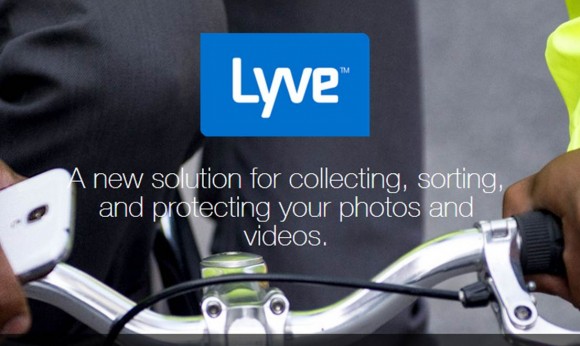After a harrowing and uncertain journey, I successfully arrived in Vegas (without my luggage) for the 2014 edition of CES — the largest US tech trade show. While the convention center floor doesn’t actually open until Tuesday, press events begin tomorrow. Not that the timing deterred me from going on a quick recon mission while awaiting my suitcase. And, as you can see above, the CES media trailers are in full effect (with Engadget’s studio under construction). As to themes, 4K HDTV and wearable tech top the pre-show buzz, with a healthy dose of Audi chatter and the requisite glut of iPhone accessorizing (despite Apple, Inc not actually having a CES presence). Plus you can’t walk 100′ without encountering something Samsung-branded.
Industry
Are We Ready for Table-Sized Tablets?
It was many years ago at CES that Dave and I both found ourselves enthralled by HP’s coffee-table-sized touchscreen on display at one of the many press events. There’s something visceral about the feeling of moving and shifting digital objects on a table, and it’s very different from the feeling you get when manipulating a tablet. With a tablet, the movements are mostly in your thumbs and index fingers. With a digital table, your gestures are broad and sweeping.
Of course, where HP (and Microsoft, and others) failed with its touchable table, Apple has soared to unimaginable success with the iPad and its successors. ln fact, we’ve been so caught up in the tablet market that little effort’s been expended on bringing touch-control to larger screens. (Motion-controlled TV interfaces are a different matter entirely.) The one big exception I know of is the Lenovo Horizon Multimode Table PC. Lenovo showed off its Horizon product at CES 2013, but given how little I’ve heard about it since then, I was shocked to discover the Table PC is actually available for sale. You can make it your own for only $979.
Now into the void steps Westinghouse. With a slight twist on the tabletop idea, Westinghouse is introducing a new interactive whiteboard for CES 2014. It’s a large tablet turned on its side, and it comes in 55″, 65″, 70″ and 84″ screen-size varieties. (The 84″ version supports 4K video.) According to the YouTube demo, the new product operates like a standard tablet running Window 8, but it includes a whiteboard mode with text recognition, annotative capabilities that work even on video, and a six-point IR touch system.
What We Know about Black Pearl Systems

GigaOM’s Janko Roettgers has been dogged about trying to discover the raison d’etre behind stealth start-up Black Pearl Systems, and now, six months after first revealing the company’s existence, Roettgers is finally able to give us details on what exactly the company aims to do. Black Pearl has launched its new consumer brand name, Lyve Minds, and plans to introduce a product called LyveHome next spring that lets users share and back up their personal media across a variety of devices and apps.
The big deal with Black Pearl, er Lyve Minds, is the management team behind it. The CEO and co-founder Tim Bucher used to be head of engineering for Apple, and the rest of his team brings in experience from companies including Netflix, Danger, YouTube, Microsoft, TiVo, Roku, and Amazon. Interestingly, I discovered separately that co-founder and Content CTO Scott Smyers left the company in October, and has now moved on to a VP role at the audio company DTS. It seems odd that one of the co-founders would abandon the pirate ship before launch. Perhaps a management disagreement? Or maybe something far less interesting, like logistics or start-up fatigue.
In the meantime, here’s what we know about the LyveHome product:
Do Retail DVRs Have a Chance?
There’s a lot of bad news on the retail set-top front. According to the NCTA, the number of retail CableCARD devices deployed has dropped to 600,000 from 603,000 since August. No big surprise. Despite a few flickers of life, the retail CableCARD market has been on a path of decline for years. But then there’s also the news that Intel has gone belly up with its OnCue set-top plans, and even Amazon is delayed with its Kindle-branded set-top, that was supposed to go to market before year end.
Do future retail DVRs have a shot?
Well, actually, yes.
Why Pace May Be Thinking About Buying TiVo

Ever since set-top manufacturer Pace picked up Aurora Networks for $310 million last week, the cable industry has been abuzz over who the company could target next. While speculation is all over the map, Jeff Baumgartner has homed in on two possible acquisition candidates. SeaChange International is one, thanks largely to its video backoffice solutions and advanced advertising technology. TiVo is the other.
There are several reasons why a TiVo purchase (or merger) could make sense.
Aereo Needs More than Court Approval to Keep the Lights On

The courts have kept the lights on at Aereo so far, but it’s not clear that Aereo itself can afford the power bill. According to The Wall Street Journal (subscription required), the online start-up company is facing massive electricity costs thanks to the tiny antennas it has to keep running for every subscriber on its video streaming roster. In the Journal’s analysis, Aereo could end up paying $2 million a year in New York alone if it scales up to the 350,000 subscribers CEO Chet Kanojia says he can support.
Meanwhile, Aereo also announced today that it will launch in the Denver metro area on November 4th. That makes nine markets for the video company, which also debuted in Detroit yesterday, that has said it intends to cover 22 markets by year end.
Kanojia indicates he has some ideas for dealing with the power dilemma. One is to use fuel cells for power generation. Another, and seemingly more likely option, is to combine Aereo’s antennas with its transcoding equipment. Like the cable operators, Aereo is discovering that relying on denser, multi-purpose equipment can (eventually) reduce both cap ex and operating costs.
As for Aereo’s broader business model,
Arris Talks Sling, Streaming Sticks, and More

Hot on the heels of its exclusive partnership with Sling, Arris is already talking additional set-top enhancements. With smarter gateways available to handle video transcoding in the home, Arris wants to slim down client devices and create new form factors that challenge the traditional set-top box. At the SCTE Cable-Tec Expo show, the company described plans to develop hardware like the Chromecast streaming stick. That type of dongle would plug directly into a user’s TV and connect over Wi-Fi to the home gateway – to expand options for whole-home networking and simplify access to premium content from multiple TVs.
Meanwhile on the Sling front, an industry insider suggested at the SCTE Expo that the placeshifting deal was done twice with Arris; first with Arris of old, and second with Arris after the Motorola acquisition. Now that everything’s signed, sealed, and delivered, it’s not clear if any major U.S. cable operators will integrate a Sling solution. However, given Netflix looks to be on the table, I supposed anything’s possible these days in cable land. Certainly cable companies are watching their satellite TV counterparts to see how far they can push the envelope with programmers.
Motorola’s Moloney Tipped for TiVo’s Board

Every industry has its own small-world feel, and the cable industry perhaps more than most. Enemies and friends disappear and then reappear in new circles. Opponents in one fight end up allies in another. And the once-president of Motorola Mobility joins the Board of Directors for retail rival TiVo.
Such is the case with Dan Moloney. Moloney rose up through General Instruments, and was part of the acquisition of GI by Motorola in 2000. He ran Motorola’s Connected Home business (known by a variety of names over the years), and, after a brief stint as CEO of Technitrol in 2010, took on the role of President at Motorola Mobility when the original Motorola split in two. He left again in 2012 when Google took over, and has largely been off the radar for the last year.
Now Moloney’s back,
